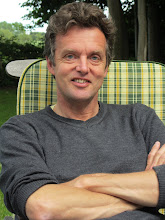THE DANISH GENERAL ELECTION (5)
With an impressive turnout of almost 88%, Denmark's 4.3 million voters yesterday elected a new Parliament. The bare bones of the result were that the Opposition red block beat the Government blue block by 89 to 86; and with 3 of the 4 North Atlantic seats, thereby crossed the magic 90-seat threshold for a majority in the 179-seat Folketing. Furthermore, the Social Democrats' Helle Thorning-Schmidt made history by becoming the country's first ever woman Prime Minister.
Yet the overall result masks a much more complicated picture. Within the red block, the Social Democrats, for most of the last century the "natural" party of Government, lost one seat to 44, to give them their worst electoral result for more than 100 years. And their prospective coalition partners, the Socialists, lost almost a third of their 23 seats to end up on 16. Against that background, how did the red block win? The answer lies in the rise of the two stars of the campaign, the centrist Radikale Venstre, who went from 9 to 17 seats, and the very left-wing Enhedslisten, who tripled their representation from 4 to 12. The latter in particular stole votes from the Socialists, whom many left-leaning voters considered had become Social Democrat-lite.
On the blue side, ex-Prime Minister Lars Løkke Rasmussen's Venstre, big brother in the outgoing minority Government, held up surprisingly well, and with 47 seats are the biggest party in Parliament. The problem was the catastrophic performance of little brother, the Conservatives, whose representation collapsed from 18 seats to 8, to make them the smallest party in Parliament. The Conservatives have for some years been a party in trouble, and they need a period in Opposition to work out what they stand for. One would have expected that the main beneficiary of their collapse would be the far-right Danish People's Party, the eminence grise of the last 10 years of right-of-centre minority Governments. Yet they lost 3 seats, to 22, the party's first ever reduction, suggesting that voters have had enough of relentless attacks on immigrants, and believe that Denmark's already restrictive immigration laws are restrictive enough. More importantly, the DPP has lost its position as kingmaker for the Government, since all of the four parties in the red block hate it. The real winner on the right was the Liberal Alliance, which went up from 5 seats to 9. Formed in 2007 by disgruntled centrists unhappy with the DPP's disproportionate influence, the LA spent its early years in chaos. However, under the leadership of the cerebral Anders Samuelsen (a name to watch), it has pulled itself together as a proponent of classical liberal - in the Continental sense - policies such as lower taxes and less regulation. In particular, they seem to have garnered votes from businesspeople at the coalface of trying to improve Denmark's economy (as opposed to politicians talking about it), notably the self-employed.
Putting all that together, it seems that the Danish electorate liked Lars Løkke Rasmussen, particularly on economic matters, but for various reasons were fed up with his partners in and around Government, and so turfed that Government out. However, they were not totally convinced by the details of the S/SF economic alternative on offer (during the 3-week campaign, opinion polls reduced the red block lead from 94-81 to 89-86), and so gave many of their votes to other parties in the red block at the expense of its core.
Ms. Thorning-Schmidt will now try to form a minority Government made up of the Social Democrats, Socialists and the Radikale Venstre, supported from the sidelines by Enhedslisten (the party which doesn't do leaders doesn't do Government either). But finding a programme which spans the political spectrum from Enhedslisten to Radikale Venstre will not be easy, as one issue already shows. Earlier this year, the Government, together with the DPP and the Radikale Venstre, came to an agreement about reducing the ruinous costs of the early retirement efterløn programme, and raising the state pension age. That agreement has not yet been enacted; but the combination of parties supporting it has in fact a majority in the Folketing and can enact it, notwithstanding opposition from the rest of the red block (unlike in some other countries, Danish political agreements in one Parliament carry on into the next, if the numbers are there). This means that a new S/SF Government, with or without the Radikale Venstre, could start life by finding itself being defeated on a key economic reform, opposition to which was a major plank of their election campaign. It would be great to be a fly on the wall in the Government negotiations over the next few days between S/SF and the Radikale Venstre.
All of which explains why Mr. Rasmussen was looking surprisingly bubbly last night. He may have lost the premiership; but he still leads the biggest party, and will be able to enact his treasured flagship economic reform despite not being in office. Meanwhile, he can look across at the former Opposition, and watch Ms. Thorning-Schmidt struggle to keep an unwieldy 4-party coalition in line, against a backdrop of potentially dreadful economic and financial news. No wonder he said on election night that Ms. Thorning-Schmidt only had the keys to the Prime Minister's office "on loan".
Ms. Thorning-Schmidt may have become Denmark's first woman Prime Minister, but it will not be easy. In particular, if she is now queen, it is Margrethe Vestager, leader of the Radikale Venstre, who now sits firmly in the queenmaker's chair.
Walter Blotscher
Friday, 16 September 2011
Subscribe to:
Post Comments (Atom)

No comments:
Post a Comment